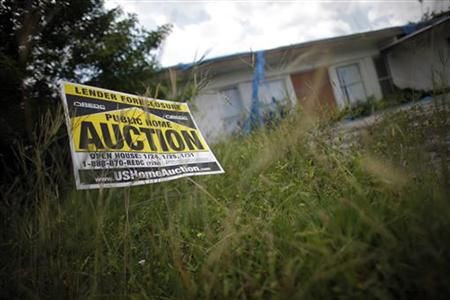Obama's foreclosure prevention program could miss target, says report

The foreclosure prevention program of the Obama’s administration is expected to aid far fewer homeowners than initially targeted, according to a report released on Tuesday.
The Home Affordable Modification Program (HAMP), launched in 2009 to rescue homeowners from foreclosure woes, will prevent only 700,000 foreclosures -- far fewer than the three to four million foreclosures that Treasury initially aimed to stop -- and vastly fewer than the eight to 13 million foreclosures expected by 2012, said a report by Congressional Oversight Panel.
The panel said that the US Treasury may spend just $4 billion on HAMP compared with initial commitment of $75 billion for the program.
Absent a dramatic and unexpected increase in HAMP enrollment, many billions of dollars set aside for foreclosure mitigation may well be left unused. As a result, an untold number of borrowers may go without help, the report said.
HAMP offers financial incentives to both mortgage servicers and borrowers to prevent foreclosures. The Treasury has so far spent less than $800 million on HAMP.
Despite repeated urgings from the panel, the Treasury has failed to collect and analyze data that would explain HAMP's shortcomings, and it does not even have a way to collect data for many of HAMP's add-on programs, the report said.
“While HAMP's most dramatic shortcoming has been its poor results in preventing foreclosures, the program has had other significant flaws,” the report said.
The Congressional panel said that the program’s potential is hurt by the Treasury’s failure to hold loan servicers accountable and outsourcing of critical program functions to Fannie Mae and Freddie Mac.
Treasury has essentially outsourced the responsibility for overseeing servicers to Fannie Mae and Freddie Mac, but both companies have critical business relationships with the very same servicers, calling into question their willingness to conduct stringent oversight, the panel said.
Besides, the panel notes that modifications frequently drive borrowers further underwater on their mortgages, leaving them with a slim chance of returning to positive equity in the foreseeable future.
Most of 483,342 permanent mortgage modifications active under HAMP have left borrowers with higher unpaid principal balances than they were before modifications.
“Permanent modifications have not, however, made much of an impact on the depth of borrowers’ negative equity. Of all active permanent modifications, nearly 95 percent have an unpaid principal balance that is higher than it was before modification,” the panel said.
The panel found that more than half of the nearly 1.4 million trial modifications initiated under the program have failed. The number of modifications in permanent status constituted only a fraction of total trial modifications.
“It is too late for Treasury to revamp its foreclosure prevention strategy, but Treasury can still take steps to wring every possible benefit from its programs,” the report said.
© Copyright IBTimes 2024. All rights reserved.




















